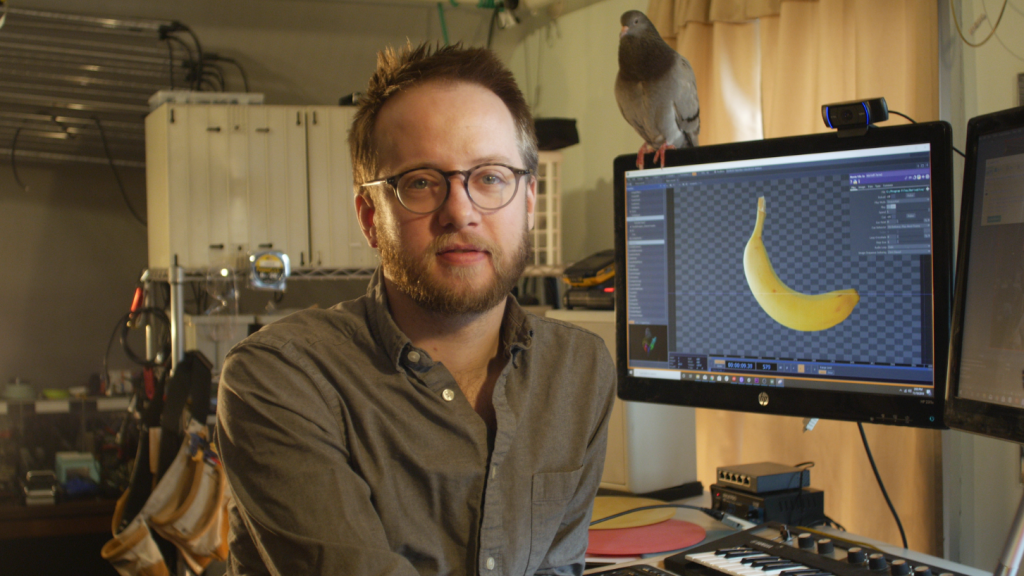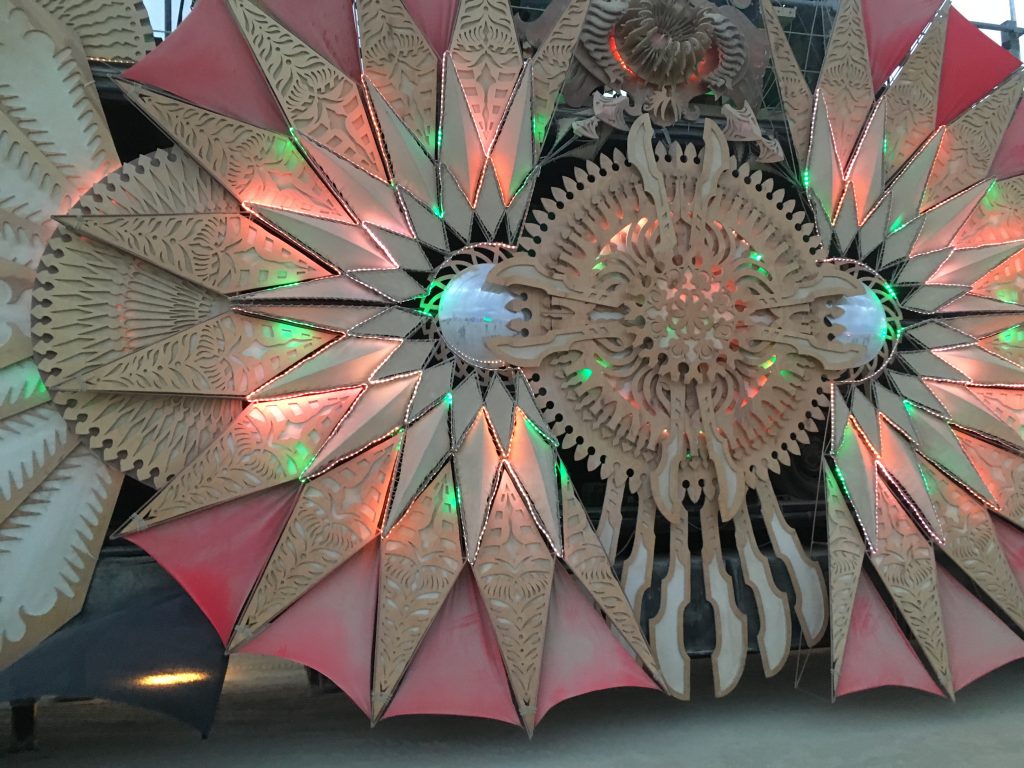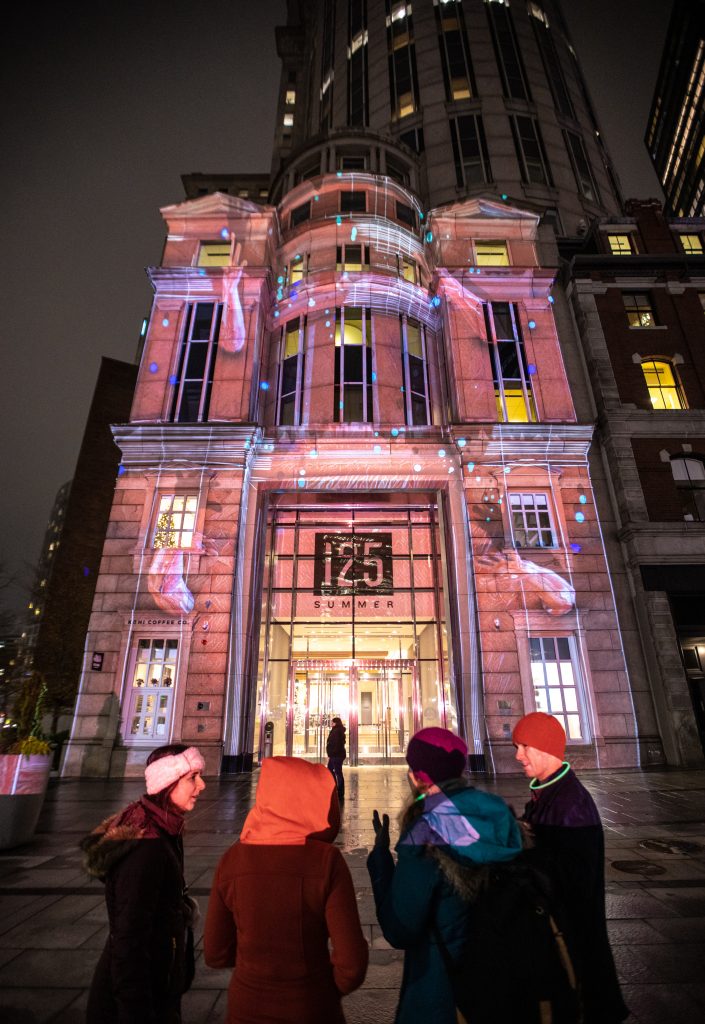
“I thought I was gonna be a drummer in a rock band and go on tour and sell CDs,” Andrew Hlynsky tells me, laughing at how absurd he thinks his admission sounds. So he went to The New School in New York to hone his practice. “I got totally wrecked because New York is intense. And it was a very high level school that I wasn’t prepared for.”
After one semester at The New School, he applied to and was accepted by Berklee College of Music in Boston. During the 8 months between his departure from The New School and his entry into Berklee, he went home for a while and started tinkering.
“I started circuit bending — opening up toys that made sounds and rewiring them. I built circuits and synthesizers, and by the time I started at Berklee, I had amassed this collection of weird instruments that you could twiddle knobs on and they’d make these harsh and chaotic sounds.” And that’s how the self-proclaimed musical mad scientist was born.

Hlynsky now spends his time developing interactive and immersive technology-based experiences. His most recent large-scale project was for the 2019 Illuminus Festival in Boston. Illuminus is an annual event that turns Boston’s public spaces into an urban museum. It features projects — some immersive and some performative — that combine art, design, technology and science. Hlynsky’s project, titled “Summer Street Luminism,” used the facade of 125 Summer Street in Boston. As pedestrians walked by the building, their footsteps would create different patterns on the building. Hlynsky explains, “I took an image of the facade and processed it in a bunch of ways to make a projection map of the building. Laser scanners were scanning the ground, so as people walked by, their feet would create bubble particles that would float on the surface of the building.” Also projected on the building were images of giant arms. “The arms would attract the bubble particles, but I also hooked up 3-foot-tall joysticks that the public could use to move these arms around.”

Hlynsky is trying to wrap his own arms around a new technical feat — experimenting with programming LED arrays. “The way that you [program LED arrays] is with video. If you imagine that each pixel turns into an LED, you can have a bunch of LED pixels and play a video out of it. The LED controls the video. Lately I’ve been cutting the LED off and hooking up other things to it.” In his latest project, he’s been hooking motors to pixels, allowing the pixel to control the motor’s intensity.
He describes his latest project as an “inert riot.” He took a bunch of piano hammers and suction cupped them to a window. Then he attached drone motors to the back of each one. He uses technology to control the motors, which, in turn, control the patterns the piano hammers play on the windows. “I can make them float or slowly knock against the window down the line or in another pattern,” he explains.
Hlynsky spoke to me from his studio space at The Reliquarium, an artist live/work space in Lincoln that often tackles collective projects. Their current project is building TimeZone, a puzzle adventure through time that will be unveiled at R1 Indoor Karting in Lincoln. He’s been with its founders, Ivy and Logan, since the beginning. “In 2009, we moved into a warehouse together in Dorchester and started putting together events and building various accoutrement for these parties and events we were throwing, like backdrops for performers and decorations for this warehouse to make our events cool.” The evolution from cool party spot to business was an organic one. “I can’t pinpoint a moment where it began. We started working together, and Logan and Ivy took charge of the things we were making and finding places to build things. Then it sort of turned into a company very slowly.”
Hlynsky says of working within the collective, “We’re all friends, but have a certain amount of respect for each other’s autonomy, so we can work together and still enjoy each other’s company outside of that.”
In addition to working on his personal projects and on collective projects with The Reliquarium, Hlynsky owns a company called Nhode Island that builds immersive and interactive experiences for corporate clients. “When I started doing this, if you talked to someone about a projection map or an immersive experience, people didn’t know what you’re talking about,” Hlynsky says. “But now they’re buzz words, and I see this as a moment in time when I can work on much bigger projects.”
And he’s fully embraced this moment in time. He’s developed content for the LED facade on the guitar-shaped Hard Rock Hotel in Ft. Lauderdale, Florida. His clients also include Reebok and Biogen. Business and art can sometimes collide in uncomfortable ways for an artist, but Hlynsky seems to understand where the line is. “I have this addiction to understanding how things work, and I feel that if I don’t keep up with that, the machine will control my life in a way I’m not comfortable with. When you’re an artist, you’re trying to solve self-imposed problems. And when you’re a designer, you’re solving someone else’s problems. For me, the art is in figuring out how things work.”
For more information on Andrew Hlynsky and his projects, go to nhodeisland.com


